Genealogical Sources

Below is a brief introduction to genealogical research and a brief digression on the various sources of research.
Family Interview – How it all begins
If you want to start researching your genealogy, you should first ask your relatives. Stories from older family members can save many applications and thus also a lot of time and high costs.
In such a survey, it is important not to react too hastily and to ask as specific questions as possible. With a direct question, for example about the grandparents of the grandparents, it can happen that the person being asked can simply seem overwhelmed. The most common answer will probably be “I don’t know (anymore)”. Specific questions such as “Were you Catholic or Protestant?” can certainly lead to answers that can be of great importance for further research.
Many people do not know or have already forgotten what kind of information material, photos or even original documents are stored in their cupboards. A forgotten certificate of employment or an annotated photo can possibly answer many open questions. Discreet, charming persistence can definitely pay off.
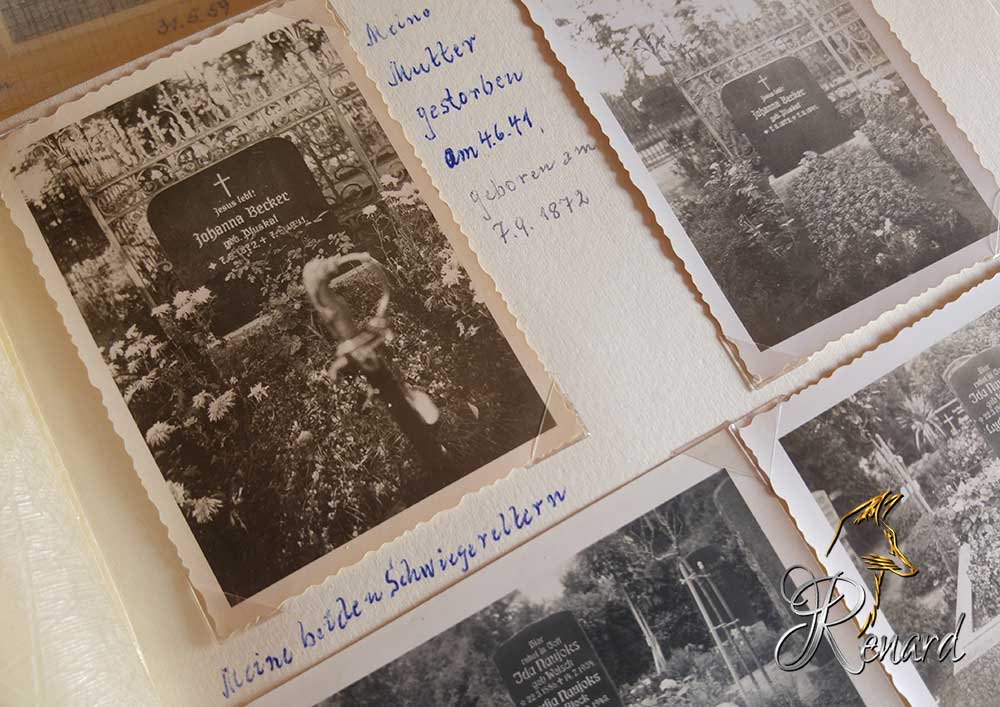
Church books and registry office registers
Anyone who deals intensively with genealogical research will inevitably have to deal with original documents. Births (baptisms), marriages and deaths have been recorded in church books for centuries. These documents are handwritten by the respective priests and pastors. They are not only often in very poor condition due to age, but also very difficult to read due to the author’s miserable handwriting.
Since 1874, personal data has been recorded in Germany by the newly created registry offices. Registry office registers are often much easier to read and for the first time have a uniform appearance. However, they continued to be filled out by hand by the registrar up until the 1930s and can therefore also be difficult to decipher.
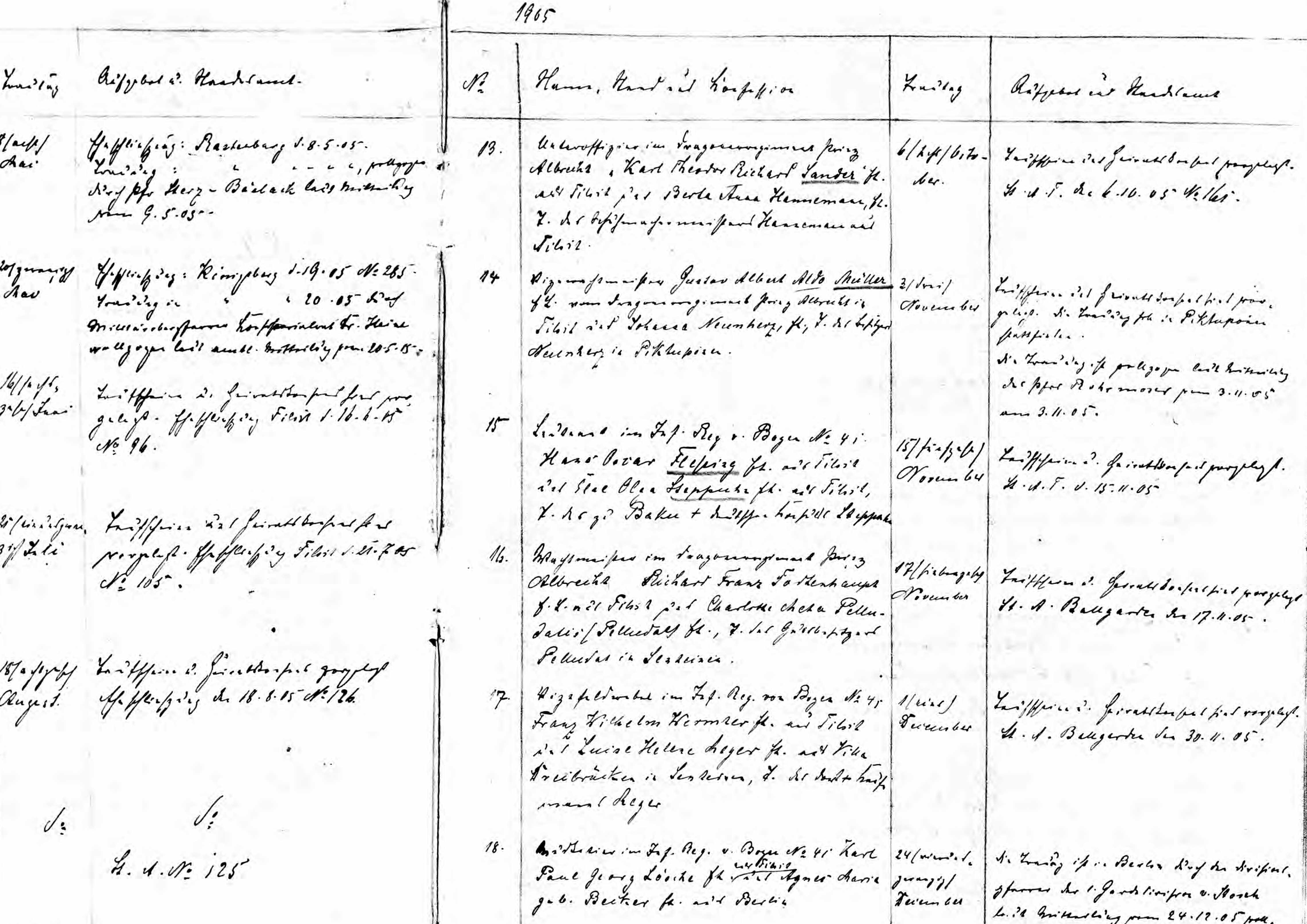
Embargo periods
The embargo periods are the biggest problem with the initial research. That is why the family interview is particularly important. It is regulated by law after which time documents can be made public. Birth certificates can be applied for in Germany without proof of relationship if they are older than 110 years; it is 80 years for marriage certificates and 30 years for death certificates. Information on living people is extremely difficult for privacy reasons. The blocking periods are intended to ensure that no personal rights are violated.
|
|
|
|
Registry Office I and the State Archives in Berlin
The Registry Office I is one of the most important contact points for documents from the former German territories, which are still subject to a blocking period. This means that all (traditional) civil status documents from the former Prussian registry offices are located in registry office I before they are handed over to the state archive after the embargo period has expired. The big problem: The document situation can vary greatly from registry office to registry office. Some vintages don’t even exist. There are even entire registry office records that have not been handed down. The reasons for this remain hidden in most cases. However, they will be related to the turmoil of war and the dramatic escape to the West.
The first registers can be applied for in the Registry Office I and in the State Archives. However, you need more detailed information here (at least the name and the specific date of birth).
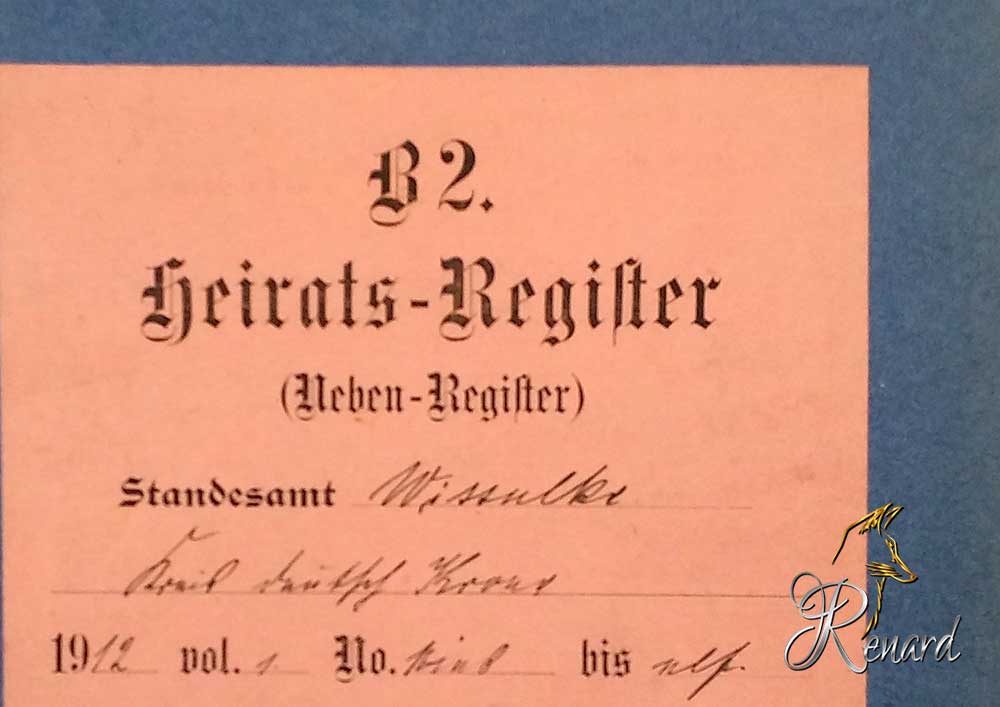
International archives
If you want to do intensive genealogical research, you shouldn’t be afraid to contact international archives. The probability is very high in every family that one or the other branch of the family leads to another country.The biggest obstacle is often the language barrier (especially when using specialist vocabulary). Even if the query in the archive was successful, the result can certainly be a foreign-language document for historical reasons. Old, handwritten texts are already difficult to read in your own language. With a foreign language or even a completely different script (e.g. with Cyrillic texts), the resignation is very great at the beginning. However, there are a large number of researchers and forums who can provide support and help with the translation of individual text passages.

Storage and visualization of the database
At a certain point, it is important to capture the records in a suitable database. There are numerous platforms for this, some of which are chargeable, but some can also be used free of charge. Some of the most popular providers include Ancestry, MyHeritage, and familysearch. These are online providers that, in addition to storage and graphic representation, also contain databases for research. Many smaller vendors tend to be software focused on creating digital family trees/pedigrees, but are rarely coupled to databases of original documents.
Genealogical research records are often saved as a so-called GEDCOM file. GEDCOM has become the standard in genealogy. Databases can be exported and imported in a very short time via a GEDCOM file. This means that the exchange between different programs but also among researchers is possible more quickly.
Platforms for genealogical research
Ancestry is probably one of the most well-known genealogical platforms. With 500 million German-language documents alone, it is also the world’s largest platform for genealogical research. Ancestry’s service is chargeable. Membership is billed through a monthly subscription.
Ancestry members not only have the opportunity to present their research. You also have access to a variety of original documents. Ancestry has digital copies of numerous important archives (e.g. from the Landesarchiv in Berlin).
MyHeritage is also a very popular genealogy platform. It offers millions of user family trees and billions of historical records. A big advantage of MyHeritage is the clear presentation and the simple search function. MyHeritage also makes its offer available via a monthly subscription. The free use contains only very limited functions (especially with regard to research).
Documents on the fallen and missing of the two world wars
The German Office (WASt) of the Federal Archives provides personal information on those involved in the First and Second World Wars. An application here can be particularly successful if the relative served as a soldier in one of the wars. If you want to submit an application here, you should have a lot of patience. The processing time can take several months and still be unsuccessful.
The German Red Cross has also set up a tracing service that can provide information about the fate of war participants. An inquiry can be promising. Here, too, you should not expect an answer that is too quick, so that you should not hesitate too long with your request.
Another very interesting source is the address of the Volksbund Deutsche Kriegsgräberfürsorge e. V. The association is financed by donations and provides online information about war graves and the soldiers buried there.
Ancestral passport – proof of Aryan origin
The ancestral passport can be a valuable genealogical resource. This proof of “Aryan origin” was introduced during the Nazi dictatorship. He was, for example, welcome when looking for a job and was considered to be conducive to a professional career. Civil servants in particular had to provide this proof. The ancestral passport caused a great deal of interest in genealogical research in the 1930s. However, it should always be used with caution. These documents are kept exclusively in private ownership. There are usually no duplicates or copies. The ancestral passport also has at least a dubious meaning, since the results of the research have often not been checked accurately enough by official bodies. In many cases it was also not in the applicant’s interest to question an “Aryan” origin.
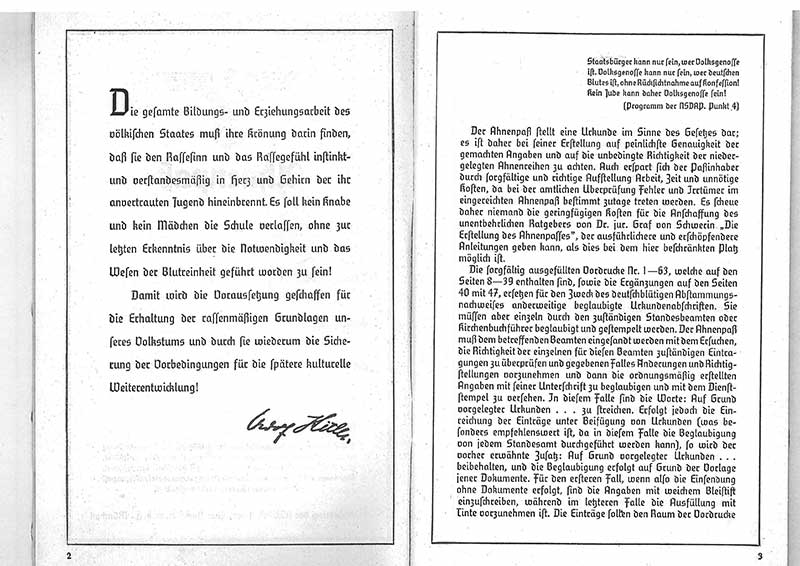
Address books, newspaper articles, lists of residents, etc.
The genealogical sources can be very diverse. Even if these do not always lead directly to the hoped-for result, they at least provide information on the traces of the families we are looking for. The population register of a city or municipality can show who lived in the same house at a certain time. It can bring forth new names that you may not have had in the focus of your research before.
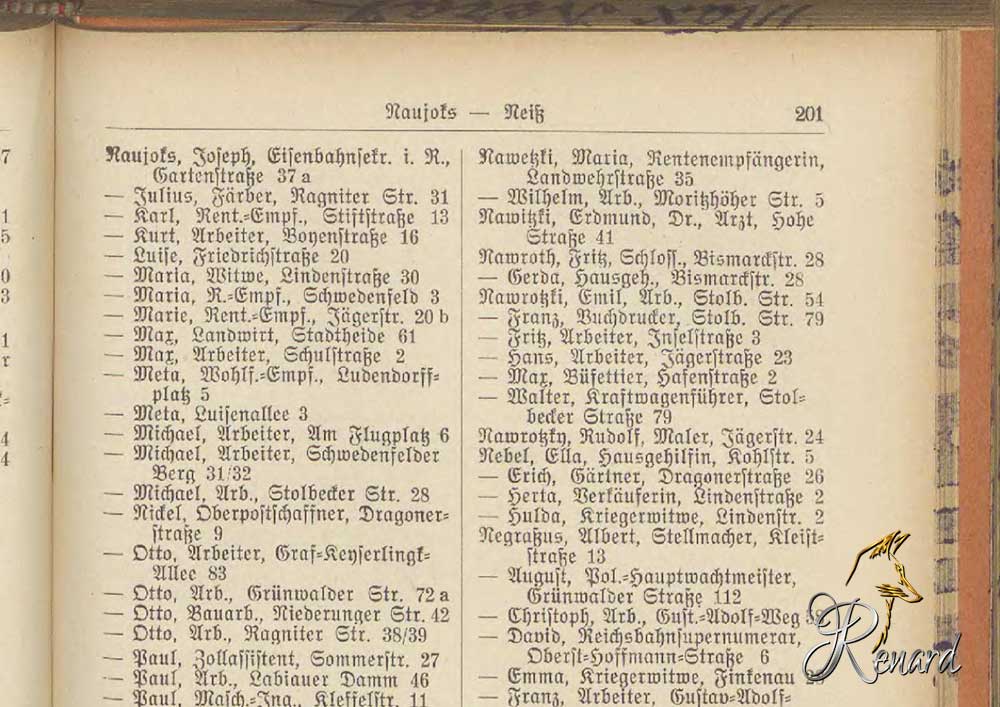
Newspaper articles can provide important information, as they often included full names and addresses in the past. People often tried to find each other again after the Second World War or to keep in touch through newspapers. Many newspapers have digitized and indexed their holdings, so that a full-text search of entire newspaper years is also possible. Traces of missing or deceased persons or even birthday greetings can often be found under the advertisements.

